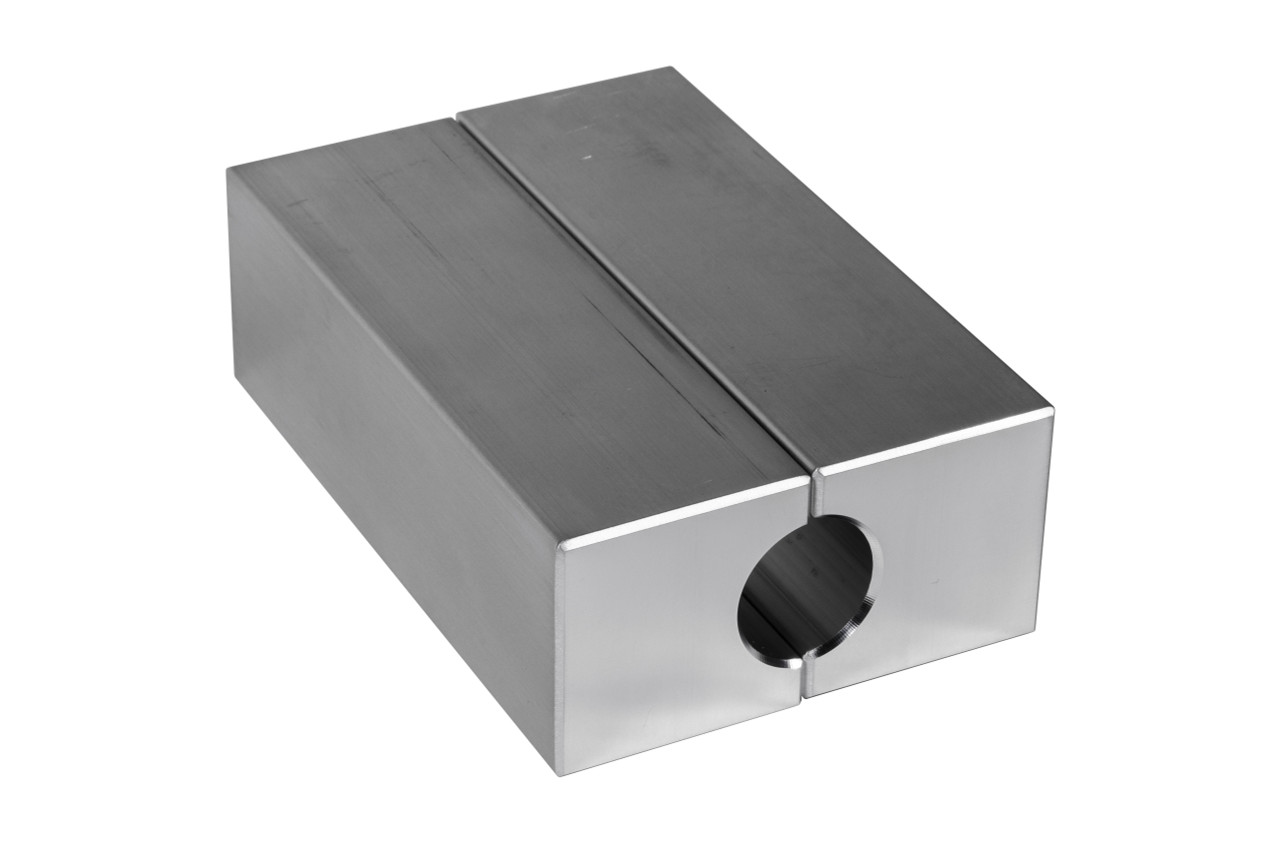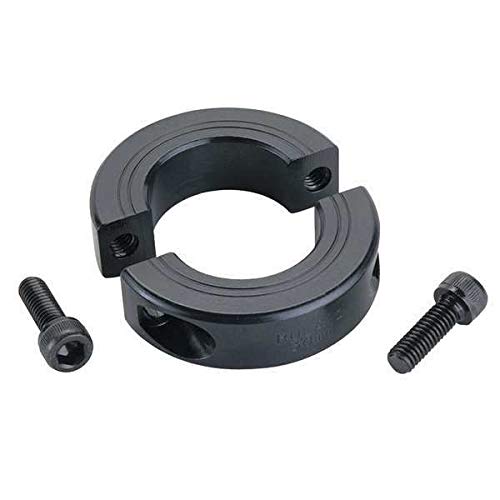
What are the steps for replacing existing fastening methods with shaft clamps?
If you are considering replacing existing fastening methods with shaft clamps, here’s a detailed explanation of the steps involved:
- Evaluation and Planning: Start by evaluating the existing fastening methods and assessing the suitability of shaft clamps for your specific application. Identify the reasons for replacing the current fastening method and determine the desired outcomes and performance improvements. Plan the transition process, considering factors such as the number of clamps required, their specifications, and any modifications needed.
- Shaft Preparation: Prepare the shaft by cleaning it thoroughly and ensuring it is free from dirt, debris, and any existing fasteners or fastening elements. If necessary, remove any existing fasteners or components that will be replaced by the shaft clamps.
- Selection of Shaft Clamps: Choose the appropriate shaft clamps based on the requirements of your application. Consider factors such as shaft diameter, material compatibility, load capacity, and any specific features needed for your application (e.g., high-speed rating, corrosion resistance, etc.). Refer to the manufacturer’s specifications and guidelines to ensure proper selection.
- Positioning and Alignment: Position the shaft clamps at the desired locations along the shaft. Ensure proper alignment and concentricity with the shaft and the components being fastened. Use alignment tools or precision measurement instruments as needed to achieve accurate positioning.
- Installation: Install the shaft clamps by following the manufacturer’s instructions. Typically, this involves tightening the clamping screws or bolts evenly and gradually, ensuring that the clamps apply sufficient clamping force without causing deformation or damage to the shaft or components. Use the recommended torque values and tightening sequence provided by the manufacturer.
- Testing and Adjustment: After installing the shaft clamps, conduct thorough testing to ensure proper fastening, alignment, and performance. Check for any excessive vibrations, slippage, or misalignment. Make adjustments as necessary, such as tightening or loosening the clamps, repositioning components, or adding additional clamps for improved stability.
- Monitoring and Maintenance: Regularly monitor the performance of the shaft clamps and the overall system. Inspect the clamps for any signs of wear, looseness, or corrosion. Follow the manufacturer’s recommendations for maintenance, such as periodic inspection, lubrication, or replacement of components.
It’s important to note that the steps for replacing existing fastening methods with shaft clamps may vary depending on the specific application, machinery, and manufacturer recommendations. It’s advisable to refer to the manufacturer’s documentation, consult with qualified engineers or technicians, and follow industry best practices to ensure a successful transition and optimal performance with shaft clamps.

What are the design considerations when using shaft clamps in machinery?
When using shaft clamps in machinery, several design considerations should be taken into account to ensure proper functionality and performance. Here’s a detailed explanation:
1. Shaft Diameter and Tolerance:
The shaft clamp should be designed to accommodate the specific diameter of the shaft it will be clamping. It’s important to consider the shaft’s dimensional tolerance and ensure that the clamp provides a secure and snug fit without excessive play or binding.
2. Clamping Force:
The clamping force exerted by the shaft clamp should be appropriate for the application. Sufficient clamping force is necessary to securely hold the shaft in place and prevent any axial or rotational movement. However, excessive clamping force can lead to deformation or damage to the shaft or other components. The design of the shaft clamp should strike a balance between providing adequate clamping force and avoiding excessive stress on the shaft.
3. Material Selection:
The material used for the shaft clamp should be carefully chosen based on the specific requirements of the application. Factors to consider include mechanical properties, corrosion resistance, and compatibility with the shaft and surrounding components. Common materials for shaft clamps include steel, aluminum, and various alloys. The selected material should provide sufficient strength and durability while considering factors such as weight, cost, and environmental conditions.
4. Alignment and Centering:
Proper alignment and centering of the shaft clamp are essential for the smooth operation of the machinery. The design should ensure that the clamp aligns the shaft concentrically and accurately with other mating components. Misalignment can lead to excessive vibration, increased wear, and potential damage to the machinery.
5. Accessibility and Maintenance:
The design of the shaft clamp should take into consideration the accessibility of the clamp for installation, adjustment, and maintenance purposes. Adequate space should be provided to allow for easy access to the clamp and the tightening mechanism, ensuring convenient and efficient maintenance procedures.
6. Shock and Vibration Resistance:
In applications where shock or vibration is present, the design of the shaft clamp should incorporate features to withstand these dynamic forces. This may involve the use of damping materials, such as elastomers or rubber inserts, to absorb and mitigate the effects of shock and vibration on the clamp and the shaft.
By considering these design considerations, engineers can ensure that the shaft clamps in machinery are properly designed and optimized for their intended applications. This promotes reliable and efficient operation while minimizing the risk of shaft slippage, misalignment, or other issues that could compromise the performance and safety of the machinery.

What are the advantages of using shaft clamps in mechanical assemblies?
Using shaft clamps in mechanical assemblies offers several advantages that contribute to the overall performance, efficiency, and reliability of the system. Here are some key advantages of using shaft clamps:
- Secure and Reliable Connection: Shaft clamps provide a secure and reliable connection between the shaft and other components in a mechanical assembly. They help prevent unintentional movement or slippage of the shaft, ensuring that the components remain properly aligned and engaged.
- Easy Installation and Adjustment: Shaft clamps are typically designed for easy installation and adjustment. They often feature user-friendly mechanisms such as screws, levers, or cams that allow for quick and precise tightening or loosening of the clamp. This facilitates efficient assembly and adjustment processes.
- Versatility: Shaft clamps are available in various sizes and designs, making them suitable for a wide range of shaft diameters and configurations. They can accommodate different types of shafts, including round, square, or hexagonal shapes. This versatility allows for flexibility in assembly designs and component selection.
- Component Protection: By securely clamping the shaft, these clamps help protect the connected components from excessive movement or vibration. They minimize the risk of damage or wear on the shaft and other components, leading to extended component lifespan and improved overall system durability.
- Adjustability for Alignment: Shaft clamps with adjustable features allow for precise alignment of components. They enable fine-tuning of the relative positions of gears, pulleys, couplings, or other elements connected to the shaft. This helps optimize the performance and efficiency of the mechanical assembly.
- Quick and Easy Maintenance: Shaft clamps simplify maintenance tasks by providing convenient access to the shaft and connected components. When maintenance or repairs are required, the clamps can be easily loosened, allowing for swift disassembly and reassembly without the need for complex tools or extensive downtime.
- Cost-Effectiveness: Shaft clamps are generally cost-effective solutions for securing shafts in mechanical assemblies. They are relatively affordable compared to alternative methods such as rigid couplings or custom-designed connections. Additionally, their ease of installation and adjustment can save time and labor costs during assembly and maintenance processes.
- Compatibility: Shaft clamps can be used with a wide range of materials, including metal, plastic, or composite shafts. This allows for compatibility with different types of shafts and facilitates integration into diverse mechanical systems.
Overall, the use of shaft clamps in mechanical assemblies provides a reliable, versatile, and cost-effective solution for securing shafts and ensuring proper functioning of connected components. Their ease of installation, adjustment, and maintenance make them valuable components in a wide range of applications across various industries.


editor by CX 2023-11-06